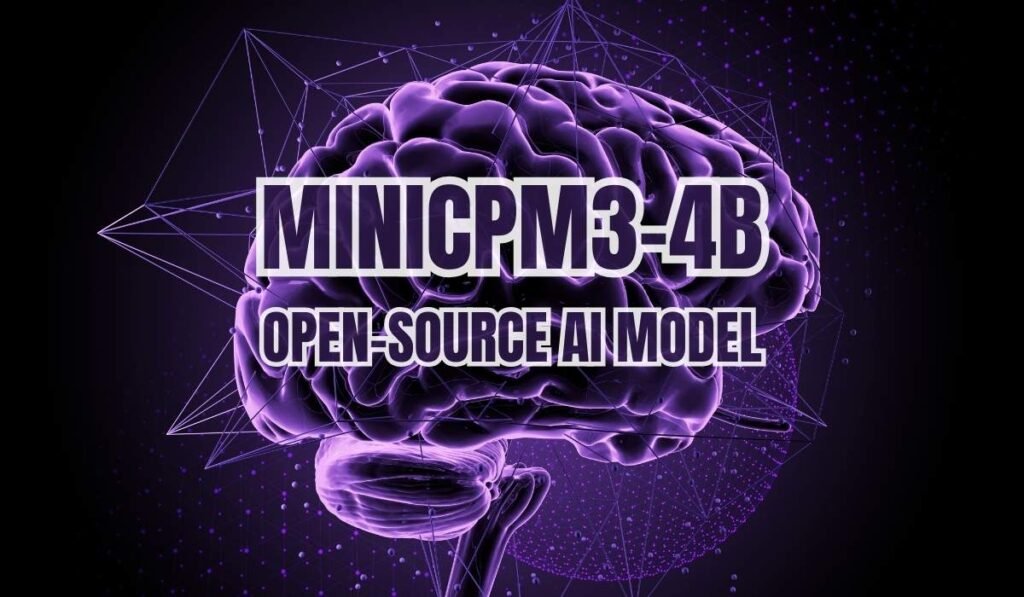Artificial intelligence is advancing at a rapid pace, with new models and capabilities emerging constantly. One of the latest innovations making waves in the AI community is MiniCPM3-4B – an open-source language model that is pushing the boundaries of scalability and performance. Developed by the research organization OpenBMB, MiniCPM3-4B represents the next evolution in the MiniCPM series, offering enhanced capabilities in a surprisingly compact package.
But what exactly makes MiniCPM3-4B stand out from the crowd? And how does its performance stack up against other leading models? Let’s dive into the key features and capabilities of this exciting new AI breakthrough.
The Power of Scalability
At its core, MiniCPM3-4B is designed to excel at scalability – the ability to handle larger datasets and more complex tasks without a proportional increase in computational resources. This is crucial for modern AI applications that need to process massive amounts of data efficiently.
Despite having a relatively modest 4 billion parameters, MiniCPM3-4B punches well above its weight class in terms of performance. It utilizes an optimized decoder-only transformer architecture, with carefully tuned attention heads and feed-forward network layers. This allows it to achieve results competitive with much larger models, while maintaining a smaller footprint.
Key Features Driving Performance
MiniCPM3-4B comes packed with several advanced capabilities that contribute to its impressive scalability and versatility:
- RAG Capability: The model incorporates Retrieval-Augmented Generation, allowing it to dynamically access and leverage large knowledge bases for improved performance on open-domain tasks.
- Function Call Support: Built-in support for function calling enables more seamless integration with external tools and APIs.
- Code Interpreter: An integrated code interpreter expands the model’s ability to understand and generate programming code.
- 32k Context Window: The large 32k token context window allows MiniCPM3-4B to process and reason over extended sequences of text.
- LLMxMapReduce: This innovative feature theoretically enables infinite context length with zero additional memory overhead.
Use Cases and Applications
The combination of advanced features and efficient architecture makes MiniCPM3-4B suitable for a wide range of practical applications:
- Data Analysis: Process and extract insights from complex datasets
- Natural Language Processing: Excels at tasks like sentiment analysis, translation, and summarization
- Code Generation and Debugging: Assist developers with writing and troubleshooting code
- Customer Support Automation: Provide human-like responses to customer inquiries
- Educational Tools: Power interactive learning applications with detailed explanations
Benchmark Performance
MiniCPM3-4B doesn’t just sound impressive on paper – it delivers tangible results in standardized benchmarks. On the Berkeley Function Calling Leaderboard (BFCL), it outperformed all other models with less than 9 billion parameters, including notable entries like GLM-4-9B-Chat and Qwen2-7B-Instruct.
In mathematical reasoning, MiniCPM3-4B flexed its computational muscles on the MathBench benchmark. It surpassed the well-known GPT-3.5-Turbo, as well as several larger 7-9B parameter models.
These benchmark results demonstrate that MiniCPM3-4B can go toe-to-toe with much larger language models, making it an attractive option for researchers and developers looking to balance performance and efficiency.
[Insert table or graph visualizing benchmark comparisons]
Technological Advancements
The impressive capabilities of MiniCPM3-4B stem from several key technological advancements:
- Optimized Training: Utilizes techniques like DeepSpeed and Megatron-LM for distributed training across GPUs, along with dynamic loss scaling and gradient checkpointing for improved efficiency.
- Enhanced Tokenization: Employs an advanced tokenization method, likely based on Byte-Pair Encoding, optimized for multilingual applications.
- Task-Specific Variants: Versions like MiniCPM-3B-Code leverage fine-tuning techniques such as LoRA for specialized tasks.
- Inference Optimizations: May incorporate quantization-aware training and attention caching for faster inference.
Accessing and Using MiniCPM3-4B
For those eager to try out MiniCPM3-4B, the model is readily available through popular AI platforms:
- Hugging Face: huggingface.co/openbmb/MiniCPM3-4B
- GitHub: github.com/OpenBMB/MiniCPM
The GitHub repository provides detailed instructions for local installation. Additionally, an online demo is available for those who want to test the model’s capabilities without setting it up themselves.
MiniCPM3-4B is released under the Apache 2.0 license, allowing for commercial use with adherence to specific terms.
Limitations and Future Work
While MiniCPM3-4B represents a significant advancement, it’s important to acknowledge its limitations:
- The 4 billion parameter size may limit its ability to capture extremely nuanced language patterns.
- It may not be suitable for highly specialized tasks requiring extreme accuracy, such as fact-checking.
- The model’s training data may limit its performance on tasks involving humor, sarcasm, or highly context-dependent language.
The developers of MiniCPM3-4B are already looking ahead to future improvements:
- Exploring larger model sizes to further enhance capabilities
- Expanding and diversifying the training dataset
- Investigating more energy-efficient training methods to improve sustainability
MiniCPM3-4B stands as a testament to the rapid progress being made in AI model development. By focusing on scalability and efficiency, the team at OpenBMB has created a powerful, versatile tool that can compete with much larger models across a variety of tasks. As AI continues to evolve, innovations like MiniCPM3-4B pave the way for more accessible and impactful applications of machine learning technology.
Whether you’re a researcher pushing the boundaries of AI, a developer looking to integrate powerful language models into your applications, or simply an AI enthusiast curious about the latest advancements, MiniCPM3-4B is certainly a model worth keeping an eye on.
MiniCPM3-4B is an open-source language model developed by OpenBMB, designed to excel in scalability and performance, featuring 4 billion parameters and optimized for handling larger datasets.
It utilizes an optimized decoder-only transformer architecture with carefully tuned attention heads and feed-forward layers, allowing it to compete with larger models while maintaining a smaller footprint.
Key features include Retrieval-Augmented Generation (RAG), function call support, an integrated code interpreter, a 32k token context window, and the LLMxMapReduce feature for potentially infinite context length.
MiniCPM3-4B is suitable for applications such as data analysis, natural language processing, code generation and debugging, customer support automation, and educational tools.
MiniCPM3-4B has outperformed all models with less than 9 billion parameters on the Berkeley Function Calling Leaderboard and has excelled in mathematical reasoning tasks compared to larger models like GPT-3.5-Turbo.
The model benefits from optimized training techniques like DeepSpeed and Megatron-LM, enhanced tokenization methods, task-specific variants, and inference optimizations for improved efficiency.
MiniCPM3-4B is available on platforms like Hugging Face and GitHub, where users can find instructions for local installation and an online demo.
Its 4 billion parameter size may limit its ability to capture nuanced language patterns, and it may not be suitable for highly specialized tasks requiring extreme accuracy or tasks involving humor and sarcasm.
Developers are looking into larger model sizes, expanding the training dataset, and investigating more energy-efficient training methods to enhance the model's capabilities.
MiniCPM3-4B is released under the Apache 2.0 license, allowing for commercial use with adherence to specific terms.





